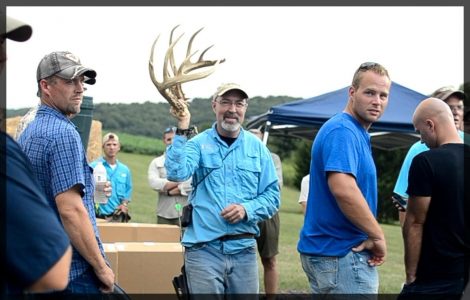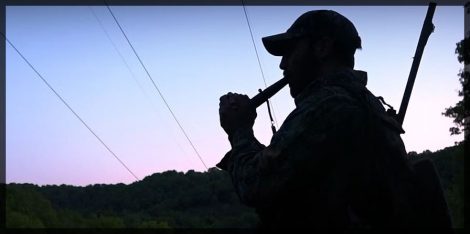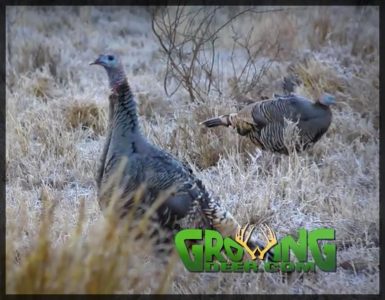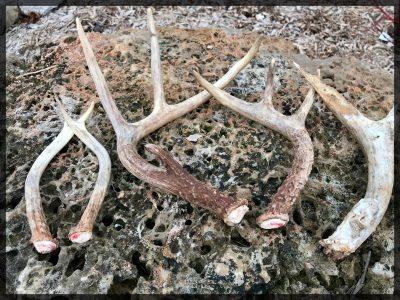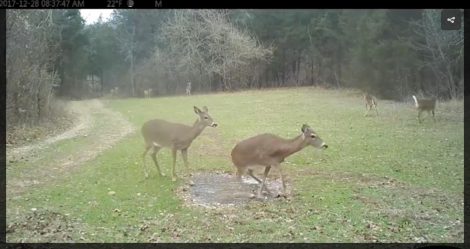Category: Deer Hunting
Old Buck? Not Sure? Look at the Chest
A friend from Michigan recently asked for help aging this buck. To accurately estimate deer age knowing the location and quality of habitat where the deer lives is helpful. It makes a big difference if the deer has been making a living eating soybeans or woody browse.
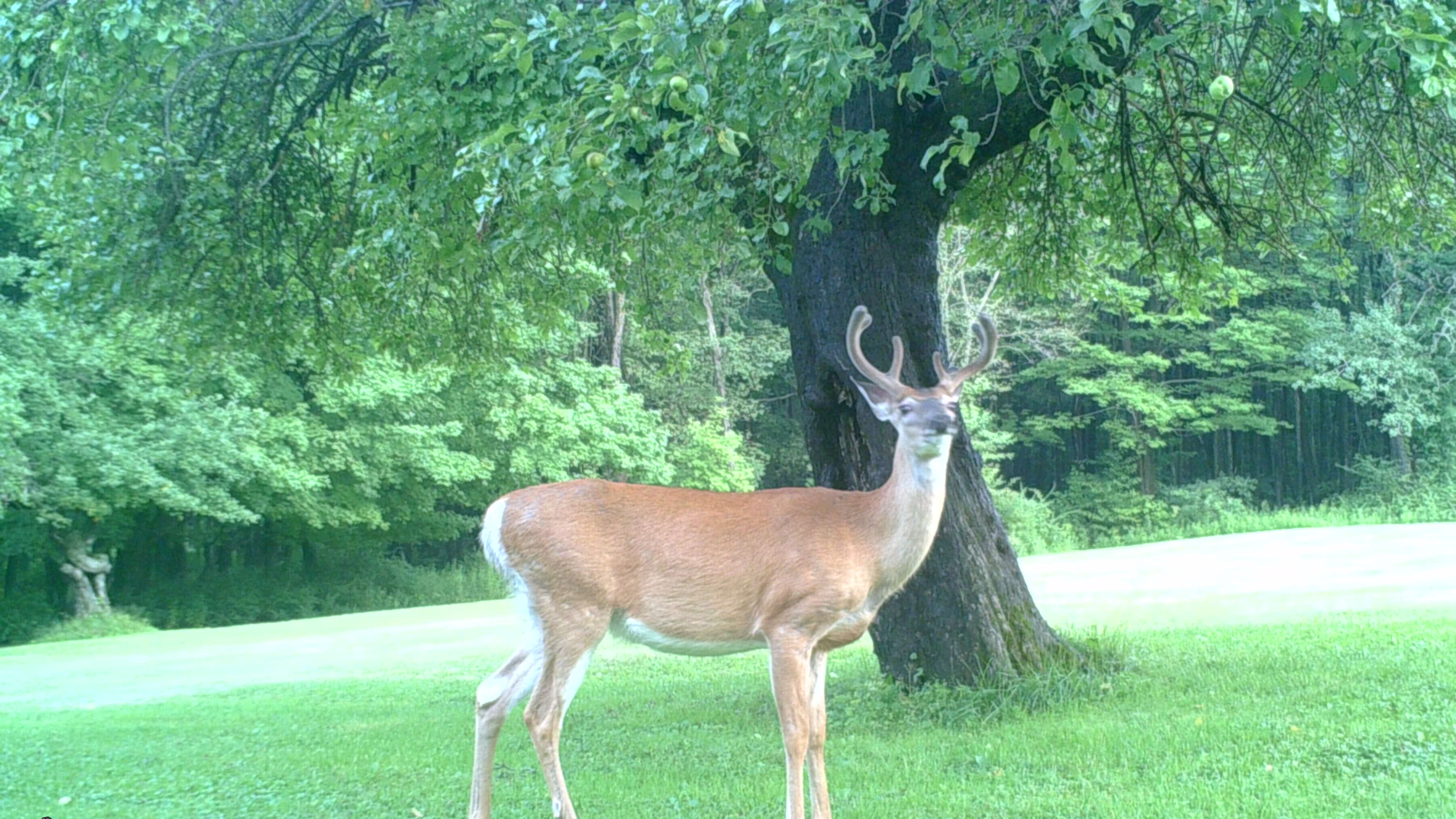
In general, this buck’s neck merges high on his chest – well above the brisket. His antler bases are relatively small and his shoulders and hams don’t appear to be fully developed. If this buck makes a living in timber habitat, I estimate he’s two. He could be a yearling if he’s been feeding on soybeans all summer.
My advice to deer hunters that wish to tag a mature buck and are faced with a quick shoot or pass decision is to focus on the buck’s chest. A mature buck’s chest will be developed and their body will have a buffalo shape. That is to say their chest will be larger than their ham. The buffalo shape is an accurate indicator that a buck is mature and is fairly easy to accurately assess in a shoot or pass hunting situation.
Enjoy Creation,
Grant
Hunting the Wind: Wind Direction, Wind Speed, Weather and Scent Control
Consistent winds seem to be rare throughout much of the whitetail’s range except in the far western portion of the plains states. Since I don’t get to hunt in western Kansas, eastern Colorado, etc., frequently I try to hang stands at the highest elevation where I’m hunting. Typically, the higher the elevation relative to the surrounding landscape the more consistent the wind will be.
Another strategy I use is to watch the weather then try to hunt the best days that my schedule allows. These may be just before a front when the wind is stronger (and more consistent), mornings during cold days (I hunt low elevation during those days as cold air sinks to the lowest elevation), or when the humidity level is low. (See this video on hunting thermals.)
I try not to hunt the best areas during days when the wind speed is forecast to be slow and the humidity level will be high. Moist air carries scent further than dry air.
I use a Scent Crusher to remove odor and store my clothes and gear and then use D/Code Field Spray while heading to the stand. This system has served the GrowingDeer Team well and the wind swirls frequently at The Proving Grounds.
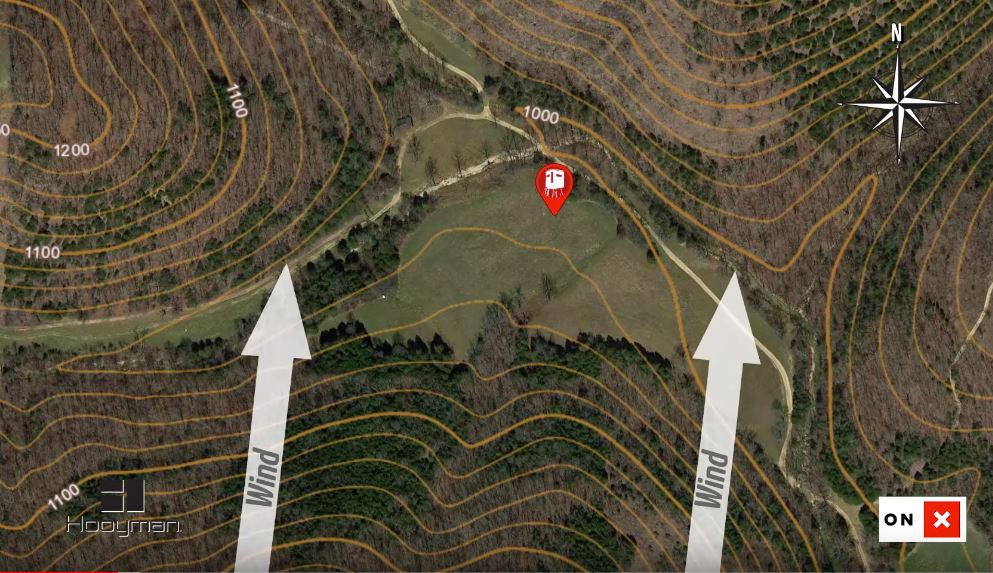
Finally, I prefer multiple stand and/or blind locations for each property. This allows the property to be hunted during most wind directions.
You might notice I didn’t focus on deer sign, etc. It’s important to be able to approach, hunt, and exit a stand or blind without alerting deer. Swirling winds make it difficult to remain on a stand or in a blind without alerting deer. This doesn’t mess up just one hunt. Deer have memory and may avoid an area where they detected danger for several days.
I use these principles whether hunting a piece of public land for the first time or where I live.
Enjoy Creation and let me know how your season goes!
Grant
Strategies for Hunting the Current Stage of the Rut
I’ve been hunting almost daily since the beginning of deer season. I have seen a lot of deer, but not a buck I wish to tag within range. That’s OK because I really enjoy watching and learning from deer. I hunt in the Ozark Mountains in southern Missouri. The rut peaks (biggest number of does receptive at one time) here during the next two weeks. My observations and strategies will apply to folks that hunt where the rut is on the same timeframe. I realize deer have finished rutting at some locations and are not close to starting at other locations. However, throughout the majority of the whitetail’s range the rut will peak during the next two weeks.
Based on those observations I’ll share my hunting strategies for the next few days.
- Bucks are still using scrapes, especially along travel corridors. Bucks aren’t using scrapes on the edges of fields and food plots as much. This is because they are focused on seeking receptive does rather than feeding during this stage of the rut.
- Most bucks, especially mature bucks, are not on a food cover pattern. Where any buck will be is very tough to predict during this week because their pattern can change in an instant if they detect a receptive doe.
I will be bow hunting today; tomorrow firearms season opens in Missouri. So, my strategy today will be much different than tomorrow.
Today I will seek stands in known travel corridors. Those are difficult to find in the mountain habitat that I hunt because it’s 90+ percent timber and cover. It’s much easier to find travel corridors and bottlenecks in ag country where cover is limited and bottlenecks are easy to find by simply studying aerial images.
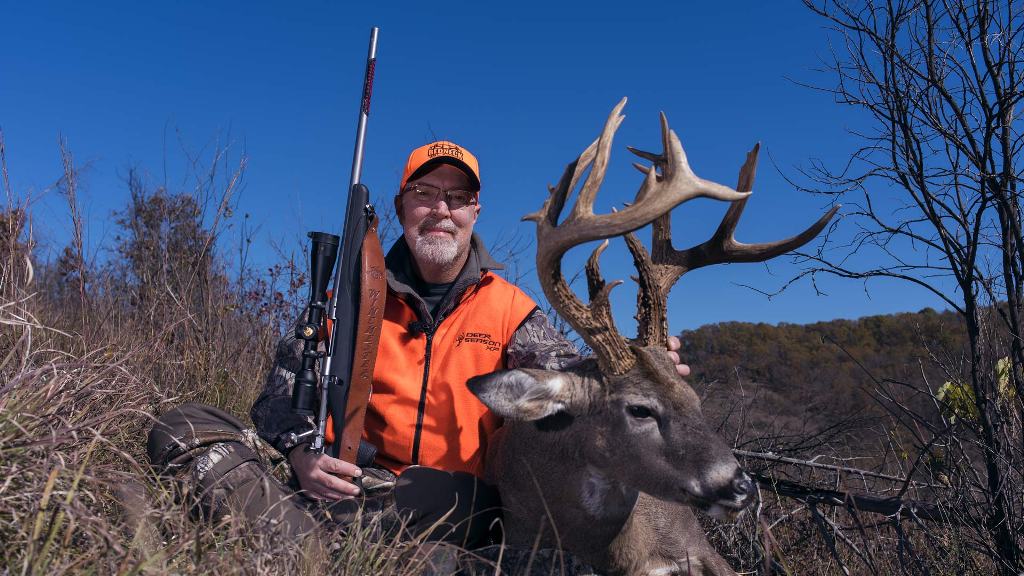
Tomorrow I’ll be carrying my Winchester and my odds will be best where I can use its effective range. At my place that means watching powerline easements or large areas where there is native grass rather than timber.
Utility easements, or other long linear openings, offer hunters a view into cover without disturbing deer. I simply approach from the downwind side and pick a spot where I think or know deer are crossing. This is an excellent stand/blind location for hunting and learning where deer prefer to travel (travel corridors!).
It seems receptive does will often seek thick cover when they are receptive to avoid being pestered by multiple bucks. Years ago, I cut all the cedars on a 25+ acre hillside and used prescribed fire to encourage native grasses and forbs to grow. Native grasses provide deer great cover but due to the slope I can see into the cover over most of the hillside. This is perfect. The deer are extremely comfortable in this habitat and I can observe them. Through the years I have watched bucks tend many receptive does in that area. I placed a Redneck Blind overlooking this area and have tagged many bucks from it. That’s likely where I’ll be hunting tomorrow morning. I’ll keep you posted on our social media.
I hope these strategies help and that you enjoy Creation!
Grant
Strategies for Grunt Calling Throughout the Season
Just a couple of weeks ago while hunting, I saw a four-year-old buck we call HighRiser and a younger buck enter a food plot about 100+ yards from my stand. It was near the end of shooting light so I took out my Messenger grunt call and grunted to see if HighRiser would come on in for a shot before dark. HighRiser looked my way after the first call. I called again and he took a few steps my way. I called more aggressively and HighRiser started towards the stand. The more I called, it was easy to see from HighRiser’s behavior and posture he was becoming aggressive. Both HighRiser and the younger buck came within range but a tree canopy blocked my shot. It was a very fun hunt! (You can see that hunt by clicking here.)
It’s because of responses like this that the Messenger grunt call is one of my favorite tools for deer hunting. During the early season I set it to the highest pitched setting. Both bucks and does will often respond to this pitch. I only call during this time of year when I see deer that do not appear to be coming within range. In addition, I start with a very low volume and work up till the deer indicate they’ve heard the call. I rarely call after they’ve responded with a look, etc. Using this strategy, I’ve watched groups of does and fawns respond as well as bucks.
As scrapes heat up and at the beginning of the pre-rut I switch my Messenger to the middle setting and use it a bit more aggressively. I don’t call to does as much at this time of year as they can be leery of bucks that are pestering them. I do call to bucks – often more than once. I will grunt lightly multiple times after the buck or bucks have shown signs of hearing the call. If the buck is coming my way I don’t call. If he stops, I will call again just loud enough for him to hear the call. Watching the behavior and posture of the buck determines how much more I use my call.
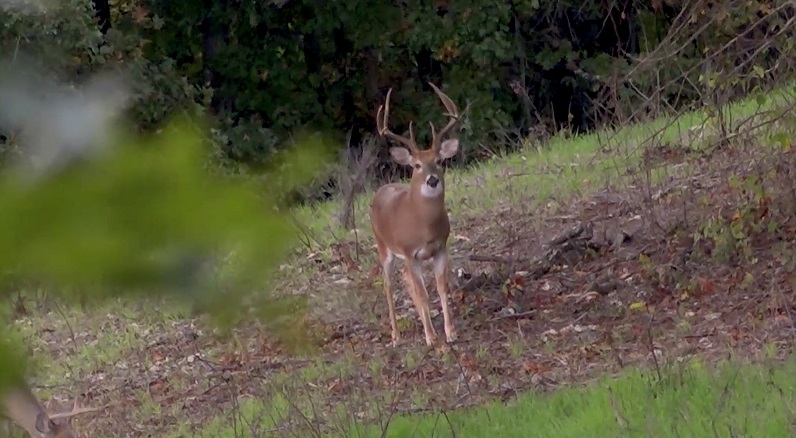
Once the pre-rut is in full swing I use the call very aggressively. I’ll even blind call (call without seeing a buck). The one time I don’t call is when I see a mature buck tending a doe. The doe will often go the other way and the buck will follow. It’s as if she’s being pestered by one buck and doesn’t want to be around another to add to her troubles.
Once most does are receptive and the rut (breeding) is in full swing, I will grunt at any buck I see cruising UNLESS they appear to be coming within range. I’ve seen buck’s respond from long distances. I blind call about every 15 to 30 minutes to pull in those bucks that might be in the vicinity of the sound but outside my range of vision
Using the middle setting on a Messenger grunt call communicates that a young buck is tending a doe possibly causing other young bucks and mature bucks to respond. Don’t over call, but a single grunt or two when blind calling will let bucks within hearing range know there’s a receptive doe nearby and they will usually come check it out.
Be careful to not call to bucks that will likely approach from the downwind side. Such bucks may bust you before they get within range. This is true throughout the season. This means the timing of when to call depends where the buck will likely approach. I’ve let bucks travel past me so they wouldn’t swing downwind when responding.
I use this same strategy throughout the rest of the season. I tend to to call more often as the season progresses. However, even a month or more after the peak of breeding bucks will still respond to grunts which indicate a receptive doe is in the area.
The third setting replicates the sound of a mature buck. I only use this if I see a mature buck and he won’t respond to the middle setting. When a mature buck responds to this call, be ready. He’s likely committed to coming in close!
Check out our clips page for Reconyx trail cam videos of bucks grunting and practice to mimic their sounds. You can start with the video here where a young buck grunts while chasing a doe.
I’ve tagged many bucks and does due to calling. It’s a very exciting and effective way to hunt! I hope these grunt calling strategies work for you, too. For more tips, watch the video at this link.
Enjoy Creation,
Grant
Hunting Strategies to Tag Bucks In October
Throughout most of the whitetail’s range the peak of the rut (biggest percentage of does receptive at one time) doesn’t occur during early October. That may sound like bad news. It’s not. It does mean hunters need to use different techniques than appropriate during the rut. During early October, bucks are focused on food and determining the dominance hierarchy.
Hunters can use this knowledge to create successful strategies to tag bucks. Bucks are genetically programmed to gain weight/develop fat to prepare for the post-rut winter stress period. If your goal is to gain weight you focus on consuming carbs. Deer are the same. During this time of year deer seek grains and acorns – both loaded with carbs.
In production corn and soybean areas deer commonly frequent standing or recently harvested grain fields. These fields tend to be large and difficult to pattern where deer enter and exit. It’s often a better strategy to scout for travel corridors from cover to these fields. Once a travel corridor is found, look for a point along the corridor that bottlenecks deer to a small area and can be approached, hunted, and exited without alerting deer.
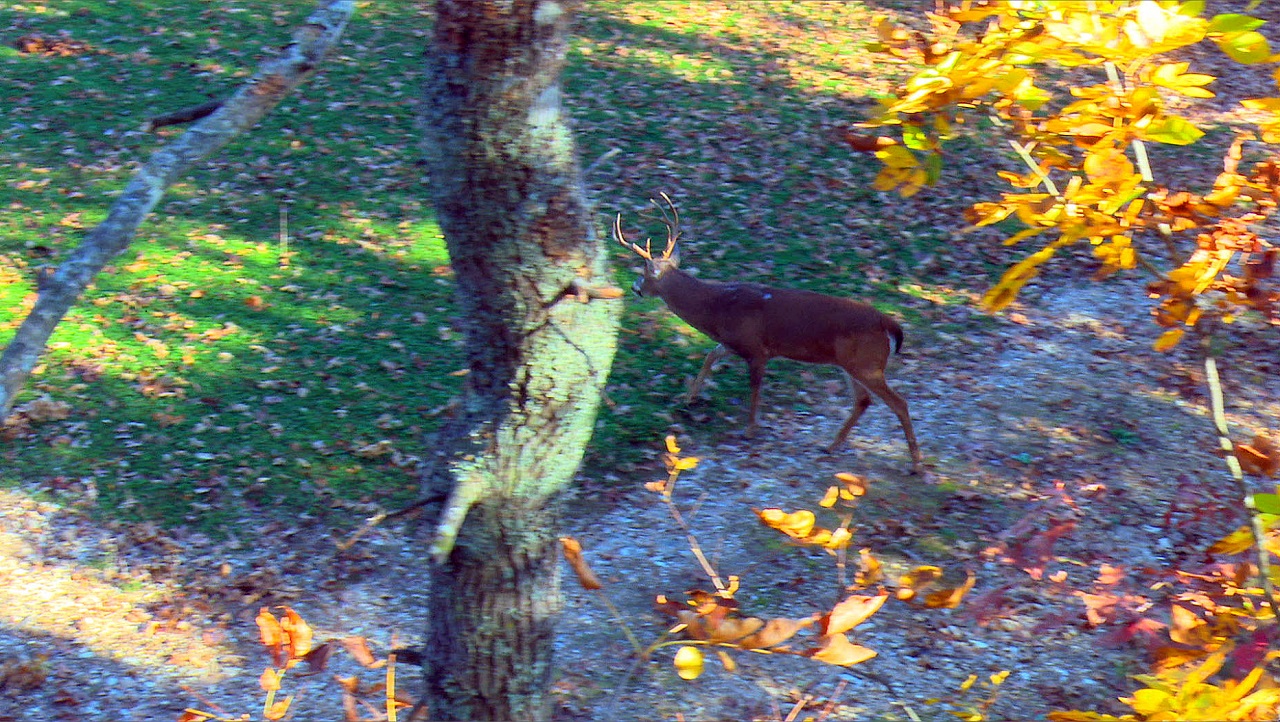
In areas that are primarily covered with timber, especially oaks, deer can be difficult to pattern when the acorn crop is widespread. When this occurs, more scouting may be necessary to find fresh sign and good stand/blind locations. In addition, more frequent scouting may be necessary as the location of the currently preferred acorns can change frequently because the timing of acorn drop varies by species, weather conditions, etc.
In addition to seeking carbs, bucks are using direct contact, scrapes, and multi-year rubs to determine the constantly changing hierarchy. This behavior means mocks scrapes can be a great tool to pattern bucks and/or create bottlenecks. I’ve shared how to create mock scrapes in this video: Deer Hunting Strategy: How To Make A Mock Scrape.
I often combine these two dominate behaviors to tag bucks during October. I create a mock scrape in or near a source of quality food. Bucks will be in or near sources of quality food during their need to gain calories. While seeking quality food, bucks will be attracted to scent communication points such as scrapes. If there’s not a natural scrape near the ideal stand or blind location I create a mock scrape within my effective shot range. You can see a successful use of this technique here.
Understanding the behavior of deer throughout the hunting season will increase the odds of tagging a buck and putting fresh venison in the freezer.
Enjoy Creation,
Grant
Deer Hunting: Breaking a Pattern
The acorns are dropping here at The Proving Grounds. This means that deer that have been on a food to cover pattern for the last couple of months will be more difficult to hunt. All of a sudden there is a new, attractive food source that will pull them off the food plots they’ve been frequenting.
Why? Because deer are seeking carbohydrates. Acorns are high in energy but low in protein. They are a big attraction this time of year. You can have a buck patterned then literally within two days it can change that pattern when a white oak off the ridge starts to drop acorns.
We’re seeing some of those changes here. We had some bucks patterned – Slingshot and Swoops – coming to a food plot. That pattern has started to break-up.
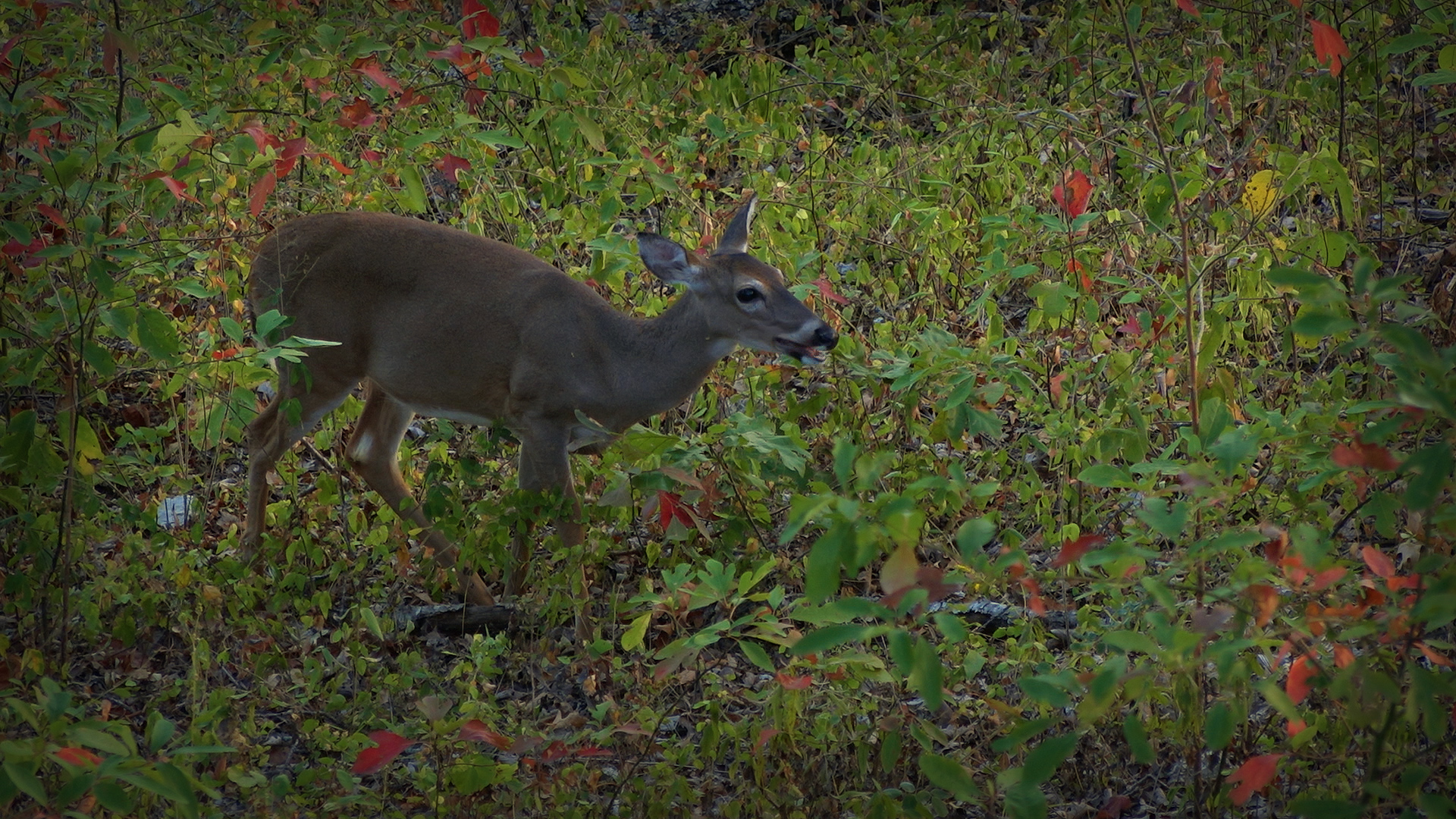
Scouting for acorns is a good technique whether you hunt 40 or 4,000 acres. We start scouting for acorns as early as July. (Read more about our recent scouting at this link.)
Ideal deer hunting can occur when oak trees are few and far between. This usually occurs when agriculture or other land use practices that limit the amount of habitat that is forested.
Another situation that produces great hunting is when only a few oaks in an area produce acorns. When these conditions exist, patterning deer may be as simple as locating the trees that produced acorns and hunting near them without spooking deer.
However, if oaks are common where you hunt, it can be extremely difficult to see deer during years when all the oak trees produce acorns. This is because deer can eat and bed within an extremely small area. Hunters simply can’t approach these areas without alerting deer! It’s tough to get between the feeding and bedding area when they are literally just a few yards apart.
Knowing which types of acorns deer prefer during the early (from the white oak family) versus late (from the red oak family) season can be a key to hanging stands in locations that fit your hunting schedule.
Last year, Daniel had a great hunt by scouting for fresh falling acorns and then hunting that location. You can see how this strategy paid off for him in this video.
We’ll be sharing our early season bow hunts soon, so stay tuned to see how the different locations and strategies are paying off for the GrowingDeer Team!
Enjoy Creation,
Grant
How to Develop a Strategy Now for Early Season Deer Hunting
Archery season starts here in Missouri on September 15. Some states have an even earlier archery season. We’ll be hunting in Kentucky where the season opens September 1. Even earlier than in Kentucky, August 24-26 Tennessee has a private lands only archery season before their regular archery season opens on September 22.
If you are hunting in states like these with the opportunity to deer hunt in late August or early September, now is s a great time to take the Nikons out and be watching for velvet antlers.
These early seasons are a great time to be chasing a hit list buck. The bucks will still be in their summer pattern: food to cover, cover to food, and back again. You have to be really careful because bedding areas can be really close to feeding areas. It can be tough to get in there without alerting the deer. We’ve hunted the early bow season in Kentucky for several years now with good results. Check out the hunt from 2017 in the video at this link.
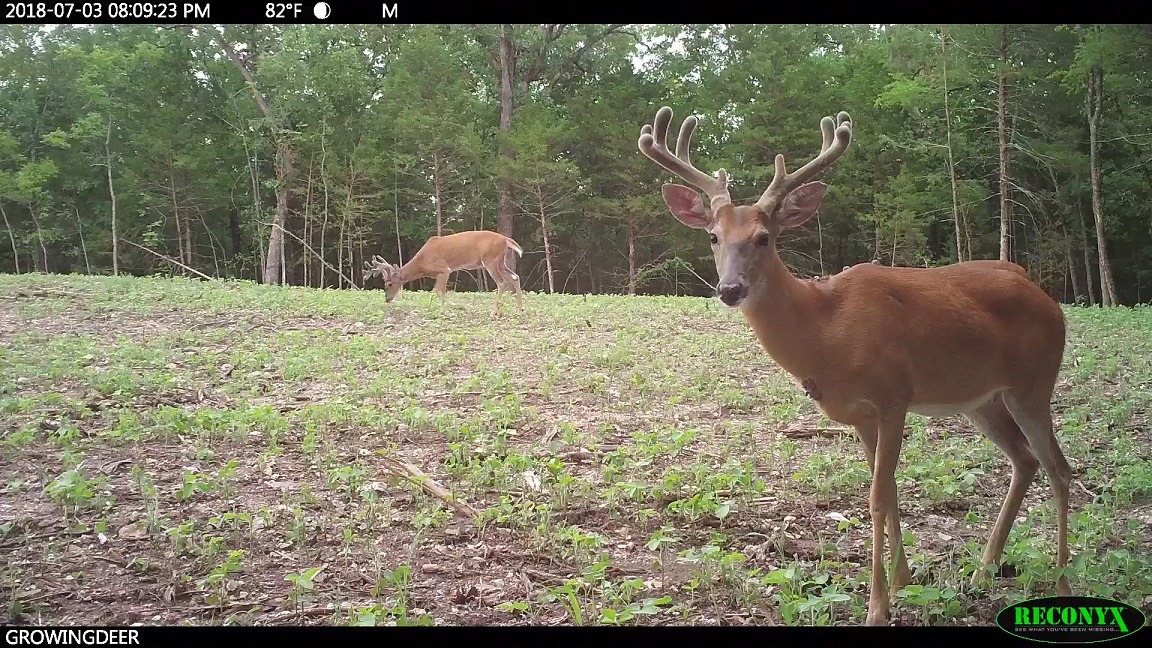
An ideal situation for early season hunts is where the bedding and feeding areas are close together but there is a crosswind that allows you to get in the stand without alerting deer.
It’s often hot in the early season so bucks typically don’t get to the food source until right at dark.
If you do some summer time scouting and find a bachelor group of bucks coming into the food plot before dark with that setup of a stand with a crosswind, you’ve got a good chance of tagging a buck in the first couple of days of the season.
Take advantage of this time when the bucks are still in their bachelor groups before the testosterone elevates and the groups disperse.
The early season can be an effective window of time to tag a hit list buck if you follow good scent control and have a strategy defined for various stand locations and wind directions. Remember the number one principle for a good stand or blind site: you need to be able to approach, hunt, and exit without alerting deer.
Watching velvet antlers and enjoying Creation,
Grant
Celebrating Pops: The Hunter, Father, The Man – Episode #432
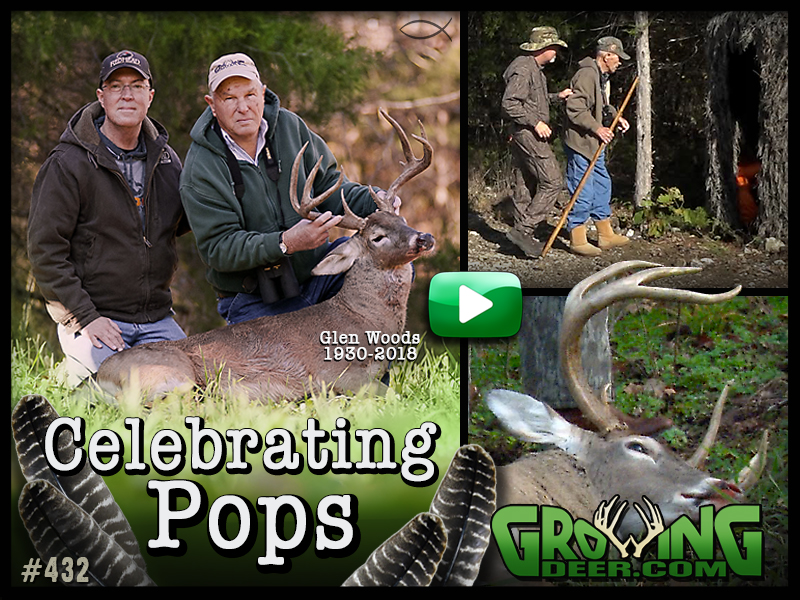 New Video
New Video
Pops Woods taught the GrowingDeer Team many lessons. For Pops, hunting was about sharing time with family and the Creator. This week we share several of our favorite lessons, memories and hunting moments of Pops. We celebrate his life as not only a hunter, but husband, father and friend.
spring field days 2018:
Thinking about deer season? Learn about year round deer management at our upcoming Field Event, March 23 and 24. Register here.
new weekly blog:
Locating toms on the roost can be key to moving in close. Learn tips for using an owl call to get turkeys to gobble.
Short VIDEO:
The best way to learn how to call turkeys is to listen to real turkeys! Grab your calls, crank up the volume of this video, and begin to call along!
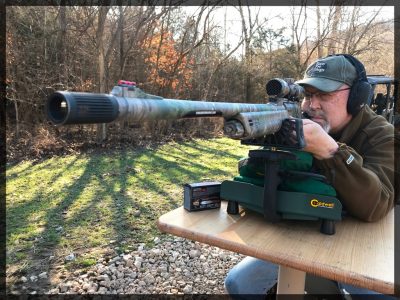
Tip of the Week:
Patterning your turkey gun before opening day ensures you know your effective range!
Patterning and Hunting Southpaw – Episode #425
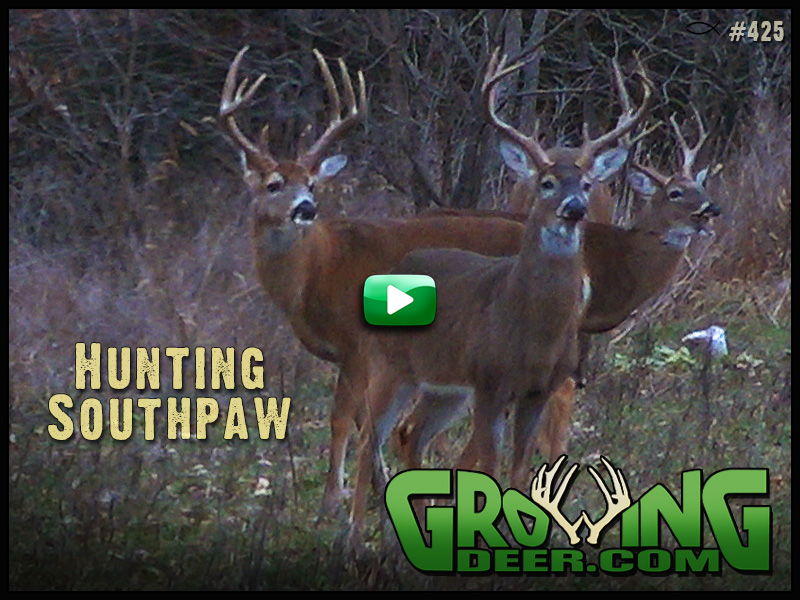 New Video
New Video
We’ve chased Southpaw for years. Hours of patterning and hunting have finally paid off! Watch the entire Southpaw story unfold as Rae ends her season with a hunt she’ll never forget!
new weekly blog:
Do the bucks in your area still have their antlers? We’ve got a few bucks that are already shedding their antlers at The Proving Grounds! Find out what influences bucks to shed their antlers in this week’s blog.
Short VIDEO:
These deer must be training for the winter Olympics. Watch as they skate on this puddle!
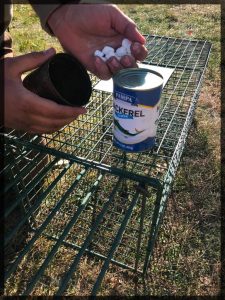
Tip of the Week:
During warm temperatures raccoons like sweets but during cold temperatures they seek meats.
Deer Hunting During Arctic Blasts
Arctic blasts are a great time to hunt!
Burrr!!! There’s an arctic blast impacting much of the whitetail’s range. Colder temperatures mean deer need more calories to stay warm. These conditions often result in some great hunting opportunities!
This seems to be especially true when the nighttime temperatures are much colder than during the day. Deer easily sense the energy savings of being active and feeding during the warmer daytime temperatures.
In addition, deer strongly prefer to bed on south facing slopes during such conditions so they can benefit from the sun’s radiant energy.
Knowing where deer prefer to bed and eat and when they will be feeding is a huge advantage!
The arctic blast is forecast to impact much of North American for several more days. Layer up and go fill some tags! That’s what I’ll be doing!
Enjoy creation,
Grant



